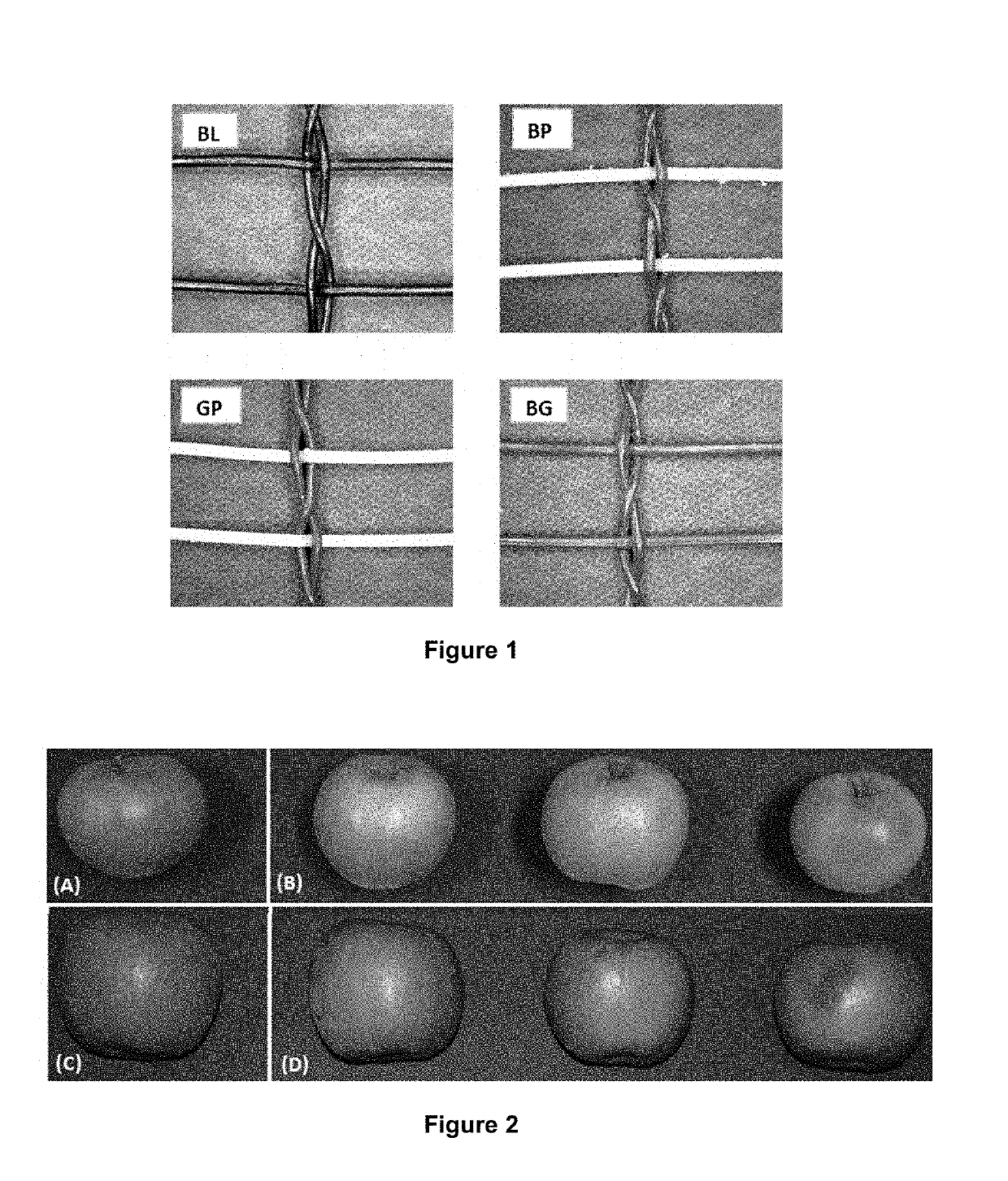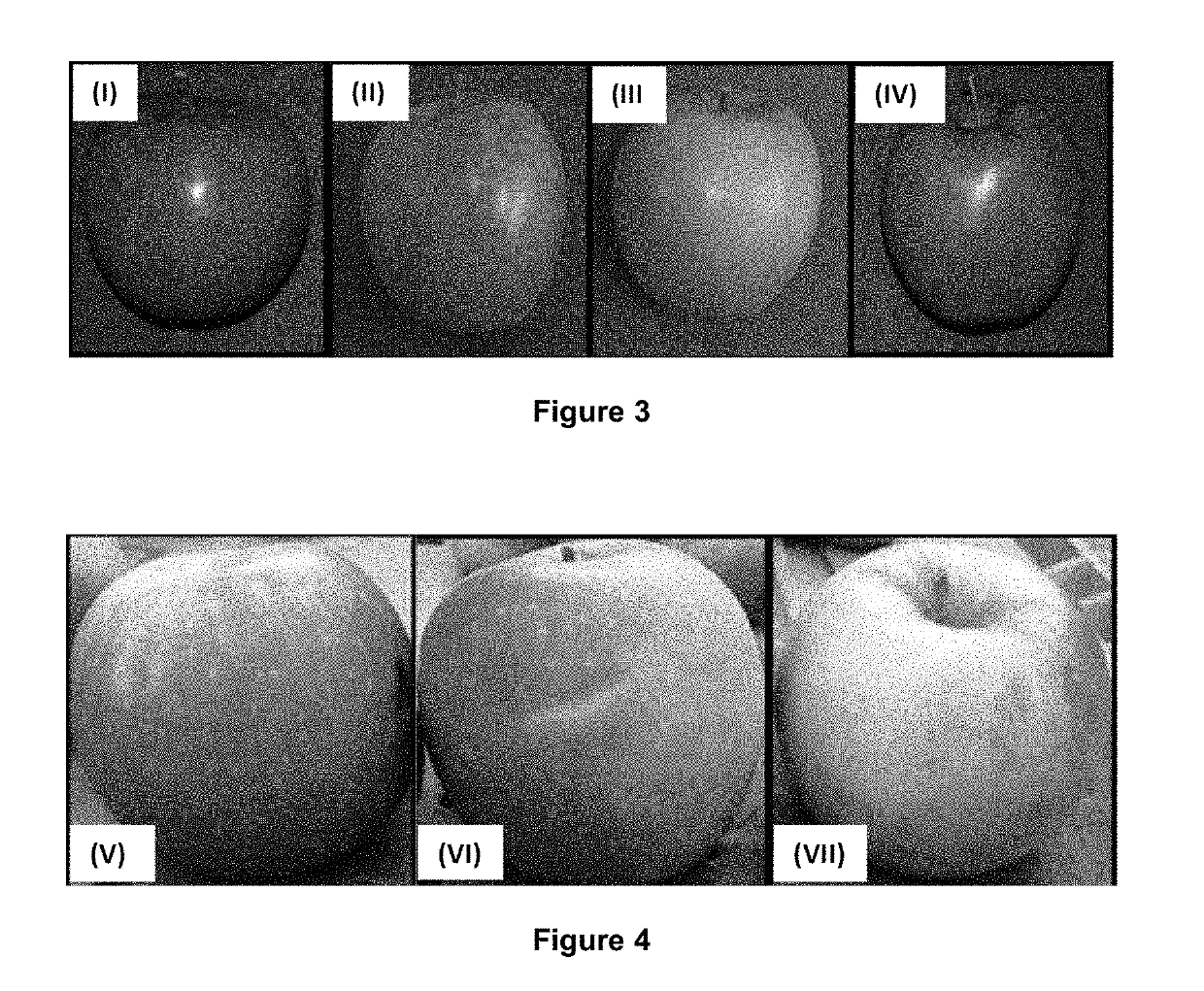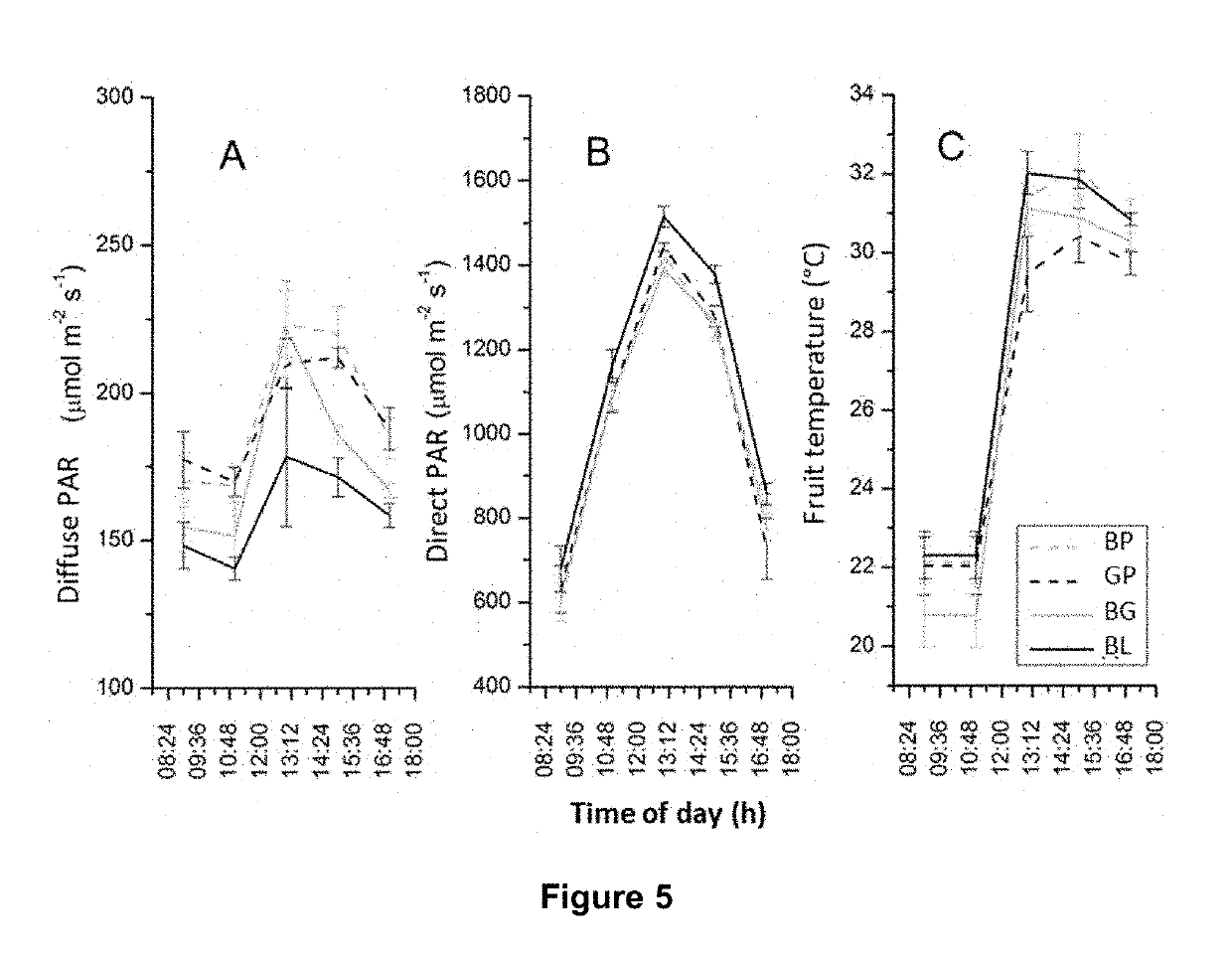At the present time,
sun damage to fruit due to an excess of solar
radiation and high temperatures results in significant economic losses for the fruit industry.
The apple industry is most affected by this damage, which in countries like the United States, South Africa, Australia, Spain and Chile causes annual losses of more than 100 million dollars from fruit that cannot be sold (Racsko & Schrader, 2012).
In addition to pre-harvesting losses, sun damage leads to a lowering of fruit quality after harvesting by provoking other physiological disorders such as
scalding and russeting, as well as
pathogen attacks that cause the fruit to rot in storage (Racsko & Schrader, 2012).
The current climate-change situation that appears to be raising solar radiation levels and temperatures makes it highly probable that the incidence and severity of sun damage to fruit will become an increasingly complex problem for producers in the coming years (Racsko & Schrader, 2012).
Sun damage symptoms in fruit include
skin discoloration, resulting from the degradation of red pigments (anthocyanins) and green pigments (chlorophylls) as a reaction to solar radiation excess and high temperatures, thus affecting the commercial quality of both green and red apples.
The complex interaction of these environmental variables has made it difficult to develop techniques to control this problem effectively in
field conditions (Schrader et al., 2001; Felicetti & Schrader, 2008).
a.—Evaporative cooling using
irrigation water: The aim of this technique is to produce fruit cooling through the application of
irrigation water at times of greatest heat. Although this technique has been shown to reduce sun damage to fruit caused by high temperatures, it has not been effective in the control of damage from excessive solar radiation, so that some of the fruit in the
orchard has suffered damage all the same (Schrader et al., 2001; Felicetti & Schrader, 2008). The
disadvantage of this practice is that it involves
high energy and water costs. In addition, it requires high-quality
irrigation water similar to drinking water; otherwise mineral salts such as
magnesium,
calcium and others accumulate in the fruit and are difficult to remove, so that the fruit no longer conforms to the safety levels demanded by the market (Yuri et al., 2000).
b.—
Chemical agents and solar protectors: the application of
antioxidant compounds has been proposed as a means of controlling sun damage. The most commonly used compounds have been
ascorbic acid and α-
tocopherol (
vitamin E), but with unsatisfactory results when evaluated in relation to different varieties of apples in countries such as the United States and Chile. The main
disadvantage with this type of product is that it only reduces photooxidative damage caused by excessive radiation and has little effect on damage produced by excessive heat (Andrews et al., 1999; Yuri et al., 2000).
Although the effectiveness of kaolins has been demonstrated in the control of sun damage, their use in Chile has not reduced this damage by more than 15% in highly susceptible varieties of apples.
This technique also requires constant applications during the season to prevent their removal by wind and rain, increasing costs.
Another
disadvantage is the
air pollution that can result from the emission of particles, in addition to the need for fruit to be thoroughly washed to remove the kaolin prior to packing (Yuri et al., 2004).
However, in the extreme climatic conditions existing in Chile its effectiveness is lower than that of kaolins (Yuri, 2013).
Nevertheless, the disadvantage of this technique is that it is labor intensive in terms of placing and removing the bags, which makes it economically unviable.
Furthermore, in hot summers a significant percentage of the fruit is damaged by the high temperatures inside the bags (Gao et al., 2002).
However, even with this type of covering about 15% of the fruit still shows severe sun damage, and its effectiveness is lower than that of evaporative cooling (Yuri, 2013).
The former is not effective in controlling sun damage, while the latter is effective, but the quality of the fruit is lower due to the excessive shade, so that its commercial application appears to be economically unviable (Dussi et al., 2005).
Finally, in Brazil 18% shade cloth has been ineffective in reducing sun damage in vulnerable apple varieties in that 20% of the fruit under this cover is still damaged (Amarante et al., 2011).
 Login to View More
Login to View More 


